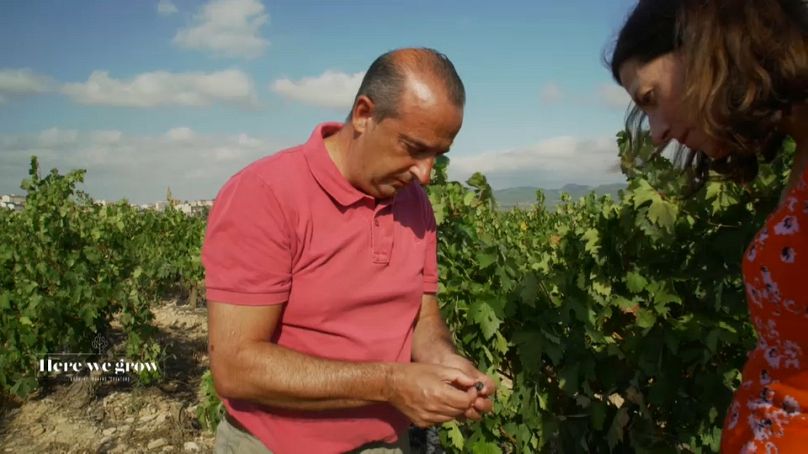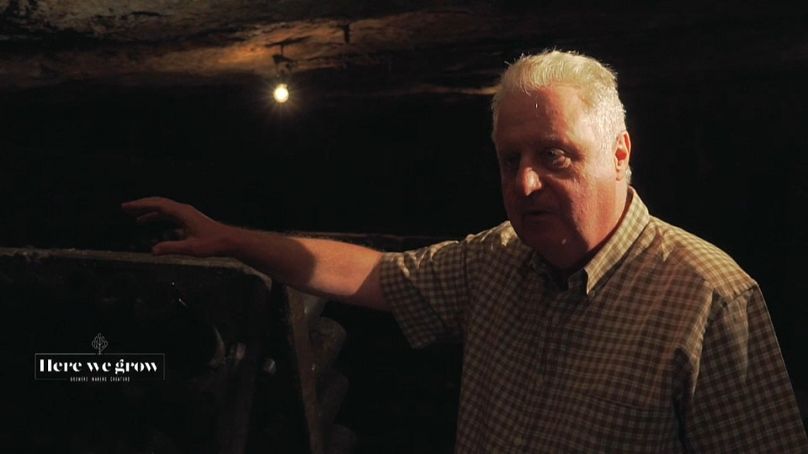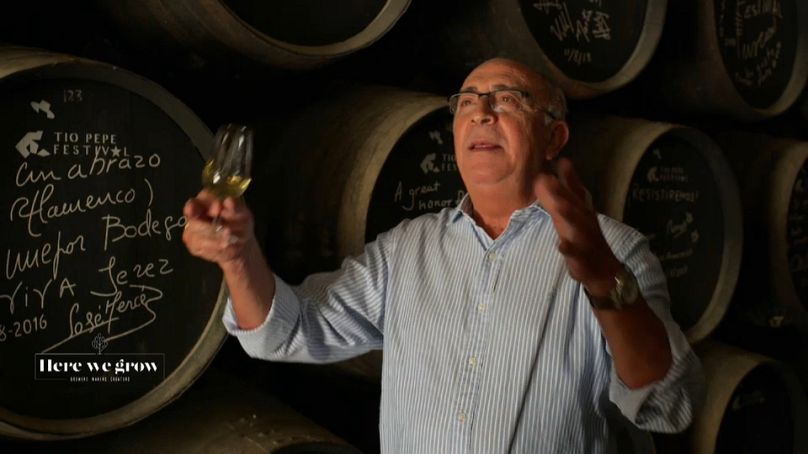Rioja, Cava, Sherry - three famous wines from very different parts of Spain. In this episode of Here We Grow, I visit the distinctive regions they come from and find out why these wines are so special and individual.
In this episode of Here We Grow, I went on a journey to find out more about the traditions and history of winemaking in Spain, one of the world's biggest - and most diverse - producers.
This took me to Spain’s main wine-producing areas: La Rioja, Penedés in Catalonia and Jerez in Andalusia.
La Rioja
In La Rioja, it was approaching harvest time, so I checked the ripeness of the grapes at one of the oldest and most prestigious wineries in the region, La Rioja Alta, which was founded 130 years ago.
The company's Technical Director Julio Sáenz showed me what to look for when checking if the grapes are ready:
"Look at the colour that remains in the skin, because you can see that they are already taking this reddish colour, but the seeds are still green, a little brown."
Julio says that La Rioja is a special place for vines to grow:
"Three conditions come together here: a special site protected by the Sierra de Cantabria mountains, the Ebro river which enters La Rioja and a very poor soil, very chalky. That all gives a great complexity to the grapes.
"The tempranillo grape variety is used to make Gran Reserva”.
After the grapes are picked, crushed and macerated, the wine produced rests in oak barrels for years. In the case of Gran Reserva, the wine will have been aged for at least five years, with a minimum of two of those years in an oak barrel.
Julio rightly believes that wines from the La Rioja region are special:
"They have a unique elegance, complexity, freshness and a long ageing capacity."
Penedés
My next stop was Penedés in Catalonia to find out more about another famous Spanish wine, Cava.
The town and surrounding area of Sant Sadurní d'Anoia in Penedés is very much the 'Cava Capital' and home to more than 80 different Cava producers.
I visited Freixenet, one of world’s largest producers of sparkling wines and still a family-owned business, after 160 years.
Pedro Ferrer, Vice President and CEO of the Freixenet Group, explained the firm's history to me:
“The company was founded by my great-grandfather, grandfather and grandmother.
"In the 19th century, we were producing fortified wine. Then came the plague of phylloxera; basically, it killed all the vineyards throughout Europe.
In the late 19th century, the phylloxera insect epidemic destroyed most of the vines in wine production across the continent. The insects had come from North America, where the vines have some resistance to it. European vines had no such resistance at the time and, beginning in 1863, it's estimated that between 2/3 and 9/10 of all European vineyards were destroyed.
Pedro says the crisis was a turning point for Freixenet:
“We changed the business. We went from fortified wines to sparkling wines, made by the traditional method.”
Cava is often made using a blend of local grapes: Macabeo, Parellada and Xarel-lo. Its name comes from it spending part of the fermentation process in underground cellars - or cava, in Spanish.
Pedro says this is an essential part of the process:
"It’s important that the second fermentation happens underground, because the temperature is cool throughout the year.”
Jerez de la Frontera
The next stage of my journey took me much further south, to find out about a type of wine which is very different from the two kinds I'd already seen, but which is equally famous: sherry, one of the oldest wines in the world.
I visited Jerez de la Frontera, within the so-called ‘Sherry Triangle’. Here, the soil is chalky and very arid. But deep underground, it’s able to retain a lot of water, enabling the vines to grow.
Sherry is a fortified wine, which means distilled spirit has been added to it. There are different types of sherry, ranging from dry and pale to sweet and dark.
Antonio Flores is Masterblender at González Byass, a company with a 185-year history and which is also producer of the iconic Tio Pepe brand.
Antonio agrees that the conditions in Jerez are unique because of its terroir, a word meaning its environmental context, the different factors that surround its production:
"Every vine in the world has a terroir.
"Jerez has two: its vineyard, its white albariza soil which offers life and personality.
And a second terroir, which is the winery and its own microclimate, because of its geographical position, temperature and humidity."
These special factors give Jerez a deserved reputation as the world capital of sherry-making. The region also has a proud tradition of nearly a thousand years of wine production.















